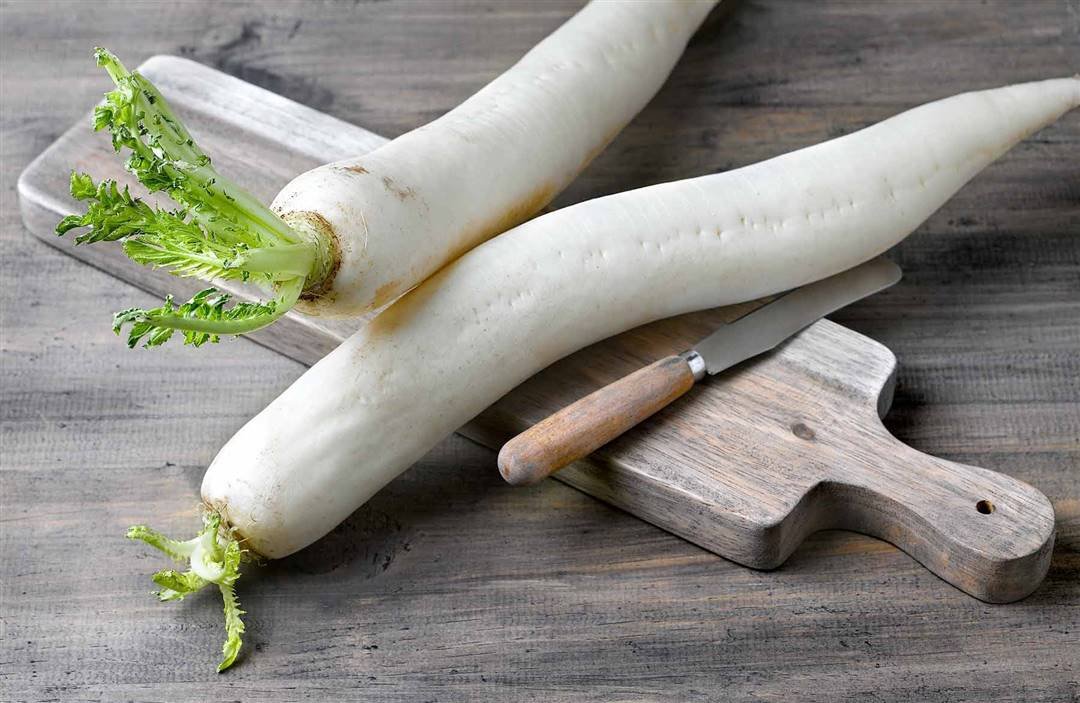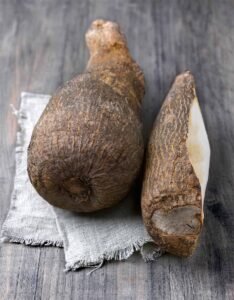They have a reputation for being humble but they hide great nutritional value by storing food substances for the plant. Its flavors and textures enrich the kitchen.
With these roots we can make creams full of energy and satiating power, ideal for winter; different dressings with which to give an exotic touch to our stir-fries or salads; new roasted accompaniments for our stews or stews, and even healthy snacks to always carry on hand.
There are plenty of reasons to make room for them in our pantry!
Daikon radish
Daikon in Japanese means “great root”, as some specimens can measure more than half a meter in length. This giant variety of radish, which looks like a large white carrot, is an essential ingredient in oriental cuisine.
Its light and slightly spicy flavor is intensified when pickled.
It is often used as a dressing and also in curry recipes or in traditional Japanese sushi.
Provides digestive enzymes that promote the digestion of foods rich in starch.
It is preferable to choose the pieces without stains and avoid the large ones, which are usually fibrous.
Escorzonera or black salsify
This unique root, sometimes known as black salsify, is typical of the Spanish Mediterranean, although today Belgium is its largest exporter.
Its interior is fleshy, soft and rich in lactic juice, which gives it a gelatinous appearance.
It has a very particular flavor, somewhat sweet and slightly nutty, which is ideal in sautéed with olive oil.
However, it should be cooked well to improve its digestibility. The water in which it has been cooked is excellent for treating gout and rheumatism.
The scouring pan is not easy to clean or peel, so it is preferable to boil it with its skin and then peel it.
Celery
This rough-skinned, spherical tuber is a highly appreciated ingredient in French cuisine due to its delicate flavor, perfect for adding personality to salads.
Its perfume, when consumed raw, has inspired very popular dishes, such as “roulade” (grated celeriac seasoned with mayonnaise or mustard).
Its meat, fluffy and crunchy, also supports cooking very well and is ideal for soups, stews and gratins.
It is grown mainly in Belgium, which uses half of its production for pickling.
It is rich in phosphorus, calcium and vitamin C.
Parsnip
It is also known by the name of parsnip.
This aromatic root, creamy in color and similar in appearance to carrots, is one of the oldest plants used by the Eurasian peoples. Cultivated by the Romans, it can still be found feral throughout Europe, along roads or in wasteland.
Its intense herbal flavor makes it ideal as an ingredient in stews and stews with slow and long cooking, although it can also be consumed raw.
In England it is served roasted like a potato.
Swede
Also known as Swedish turnip, it belongs to the same genus as cabbages.
Its inedible skin can be green, purple or a striking red color, and its whitish flesh is consistent and very juicy.
This tuber originating in northern Europe is very rich in potassium and folic acid, which together with its low sodium content makes it interesting as a food for hypertensive people.
It can be eaten raw in salads and crudité s, or cooked.
If it is kept for a long time it can become woody. It does not support freezing well.
Radish Rayford
Also known as horseradish, this thick root is rich in ethereal oils and is reminiscent of Japanese wasabi. It is what makes it, like the onion, cause a slight tearing when handled.
Its intensely spicy flavor is greatly weakened during cooking, and although it can be consumed raw, it is usually used as a condiment in the preparation of sauces and creams.
Raw grated can be added to spreadable cheese.
It is very digestive since it stimulates gastric juices.
Yam
This tuber has been cultivated for millennia in tropical areas. Today it is one of the most widespread foods in the world, although little is consumed in Europe.
It is very energetic and has abundant fiber, so it gives a quick feeling of satiety.
Like cassava, chips can be made with it.
It keeps better than other tubers (it can last several months in a cool and dry place). However, it should not be stored in the refrigerator.
